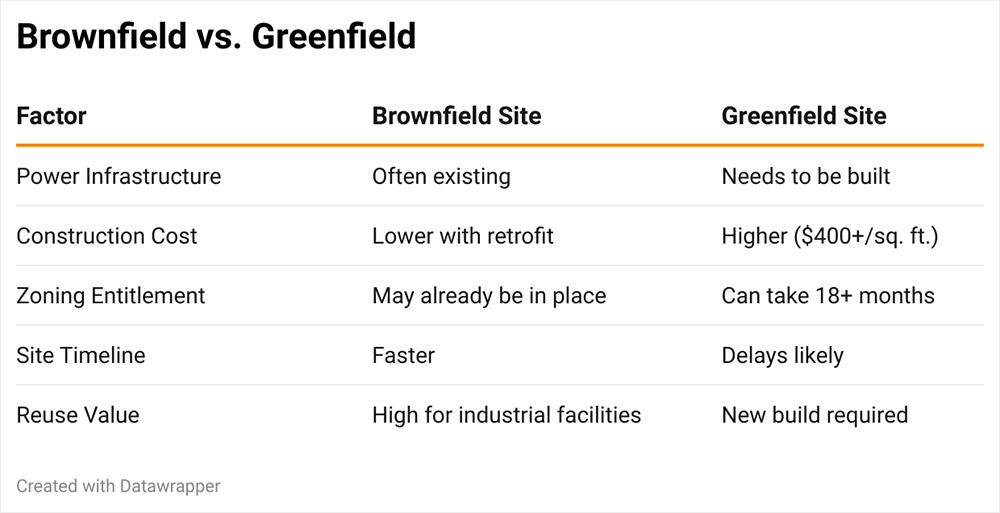There’s a dirty little secret in industrial site selection: Some of the best places to build aren’t new at all. They're old. Outdated. Vacant. Maybe even a little ugly. But they have what matters most—infrastructure.
Old manufacturing facilities are making a comeback, and for good reason. The power's already there. The water's already flowing. The rail spurs, the heavy-duty foundations, the oversized truck courts—they don’t need to be engineered from scratch. These buildings were built to make things. And that’s exactly what today’s companies need.
The best places to build aren’t new—they’re already built.
In this market, it’s not just about speed to market. It’s about feasibility. Searching for a greenfield site that checks every box—power, water, zoning, entitlements—and actually delivers within your project timeline? That’s the real unicorn hunt. Meanwhile, sites like a shuttered plant in Joliet or a former industrial facility in North Carolina might be sitting there with 10 megawatts, cranes, column spacing that actually works, and enough yard space to run your logistics operation with room to spare.
And here’s the kicker: Most of these buildings are off the radar. Everyone's chasing shiny new ground-up developments. But if you're willing to look past the faded paint and the tired office carpet, there’s gold in those walls. The cost of rehab of an existing manufacturing facility could sometimes be a fraction of new construction. If the bones are good, you can put the money where it counts—into automation, into your process line, into production.
10
You want a real case? We helped retrofit a solar panel manufacturing facility in a building that formerly produced automotive components. It had the cranes, it had the power, it even had the column spacing. The cost to upgrade and to modify the existing space was more cost efficient than a potentially $400-per-square-foot ground-up construction.
Reusing these assets isn’t just smart. It’s strategic.
And yet, communities and site selectors still treat brownfield like second-class options. That’s a mistake. These aren’t just backup plans—they should be at the top of the list. You want speed? You want savings? You want infrastructure that actually works? Look at the buildings that were already doing the work.
Reusing these assets isn’t just smart. It’s strategic. In a market where power availability is killing deals, where zoning can delay you 18 months, where new builds come with regulatory and construction uncertainty, brownfield is the answer hiding in plain sight.
So forget what it looks like. Focus on what it can do. Because your next factory might already be built. You just have to be smart enough to see it.




